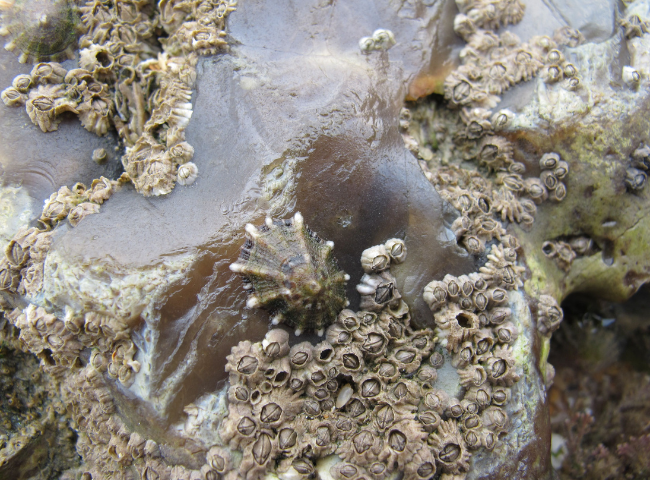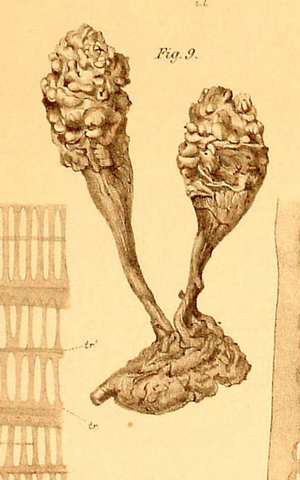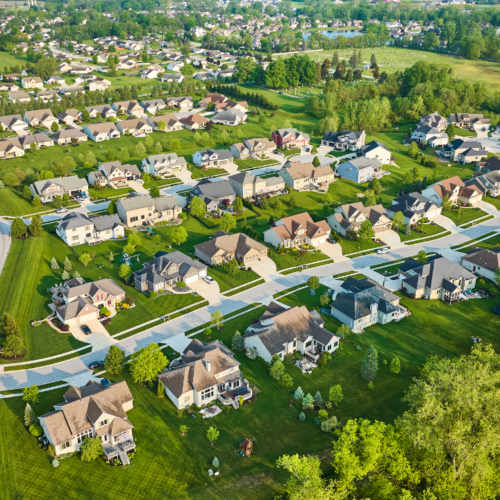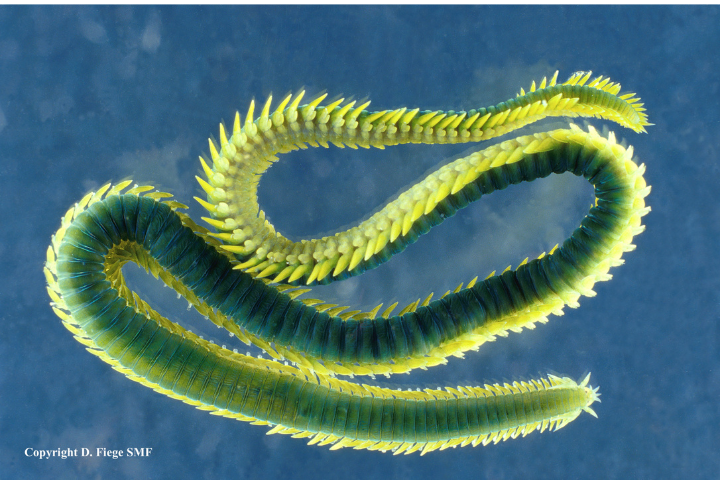Climate change and invasive non-native species have been identified as two of the top five drivers of biodiversity loss [1]. But how do these two risks relate to one another and what are the potential synergistic effects?
Globally, mean temperatures have increased by around 0.16 °C per decade since 1970 [2], with much of this increase attributed to rising greenhouse gas concentrations from human activity. Similarly, humans are responsible for the introduction of non-native species into new habitats and their effects on local ecosystems. Non-native species are defined as those living outside their natural range, due to the deliberate or accidental introduction by humans.
The World Register of Introduced Marine Species (WRiMS) keeps a global record of known non-native species in the marine environment [3] . This excludes species that have extended their range, colonising new locations naturally, even if this was possible due to climate change. The current number of introduced species globally stands at 2,323.
Not all of these are invasive in their new locations. Many introduced species fail; they do not lead to established populations. Others may thrive in the absence of the predators and parasites in their native range, but have benign or even positive impacts. A non-native species is considered invasivewhen it has an adverse impact on native species, habitats, or an area’s biodiversity [4]. Combined with the effects of climate change, the concern is that more non-native species will become established and invasive.
Introducing non-native species
There are numerous ways for non-native species to be introduced into a new area, some intentional (for example, if used as a biological control), but usually the introduction is unintentional. In the marine environment, introductions are mostly due to shipping. Historically, untreated ballast water containing organisms from a different area was discharged at the next port, leading to the spread of these species. Nowadays, the spread of non-native species via this route is limited by ballast water management standards. Another way of introducing species is via biofouling; in this case, organisms attached to anchors, hulls, and other hard surfaces are deposited outside their natural environment during the journey or at the next port.
An example of a well-established invasive species is the barnacle Austrominius modestus, which probably arrived in UK waters via biofouling. This species appeared first in the 1940s and since then spread rapidly throughout UK waters. It competes for space with native barnacles and oyster spat, with advantages due to its tolerance of a wide range of temperatures, salinities and turbidity, along with rapid reproduction and growth.
In addition to commercial shipping, other pathways for introducing marine non-native species include recreational boating, aquaculture, fishing and the aquarium trade.

Figure 1. Different species of native barnacles and a limpet gastropod
Threats from invasive species
Over 2,000 established non-native species are recorded for Great Britain, with 194 of these classed as invasive and 39 inhabiting marine ecosystems [4]. These invaders threaten not only our ecosystems, but also have social and economic implications. In 2010, the cost resulting from invasive species across UK habitats was around £1.7 billion per year [5].
Around the world, marine invasive species cause economic damage through the collapse of fish stock, loss of tourism and damage to coastal areas [6]. Negative environmental impacts include modifying habitats, changing community structures by predating on or outcompeting native species, decreasing water quality, and introducing and/or spreading diseases [7].
The effects of climate change on invasive species
Environmental variables influence the survival and success of species, whether native or not. It is expected that changes to climate factors will improve conditions for invasive species, which are often opportunistic with rapid growth and high dispersal rates, along with tolerance of a wide range of environmental conditions [8, 9].
Climate change could accelerate the success of invasive species in several ways:
Changes in ocean currents and increased frequency and severity of storms can facilitate dispersal.
Higher temperatures are known to favour range expansion; for example Styela clava, the Asian club tunicate, expanded its range northwards and is now invasive in Irish waters, where it outcompeted native species, leading to decreased biodiversity [10].
Native species can struggle with environmental changes, becoming more susceptible to be outcompeted by or predated on by other species or more vulnerable to pathogens.
‘Sleeper species’, non-native species already present, but not yet invasive, may ‘awaken’ as soon as conditions become more favourable, leading to rapid growth and detrimental effects on the local ecosystem.

Figure 2 Styela clava, invasive club tunicate
What can be done?
In addition to strategic national and international policies to limit and monitor the spread of invasive species, local action needs to be taken, for example by individual ports and harbours, in introducing robust biosecurity policies.
Some changes in species distribution will occur due to natural change and adaptation, and some changes due to climate change are already inevitable. However, not all of these changes will necessarily be detrimental. Therefore, close monitoring to determine, which non-native species are becoming invasive, is key. Suppression of invasive species has only been successful when both early detection and swift implementation of management strategies were possible [11]. A watch list of marine invasive species in UK waters was developed in 2015 and helps in monitoring areas such as ports, where the introduction of invasive species is likely [12].
At Thomson, we can undertake such monitoring, and we have the expertise required to identify non-native species. Our accurate species level identification also helps in avoiding unnecessary management measures based on misidentified non-native species.
Individually, both invasive species and climate change have negative consequences for biodiversity, and as these threats will have compounding effects, we need to address both. Mitigating climate change will limit the number of new non-native species that become established, therefore protecting biodiversity. Maintaining biodiversity, on the other hand, mitigates the effects of climate change, due to the higher resilience of diverse ecosystems.
Authors: Daisy Chamberlain & Kiera Long
References:
[1] IPBES (2019). Global assessment report on biodiversity and ecosystem services of the Intergovernmental Science-Policy Platform on Biodiversity and Ecosystem Services. In: Brondizio E.S., Settele J., Díaz S. & Ngo H.T. (eds). IPBES secretariat, Bonn, Germany. 1-1148. Accessed at https://doi.org/10.5281/zenodo.3831673
[2] Levinson D.H. & Fettig C.J. (2014). Climate change: Overview of data sources, observed and predicted temperature changes, and impacts on public and environmental health. In: Pinkerton KE, Rom W (eds) Climate change and global public health. Springer-Verlag, New York. 31–49.
[3] Rius et al. (2022). World Register of Introduced Marine Species (WRiMS). Accessed at https://www.marinespecies.org/introduced
[4] Department for Environment, Food and Rural Affairs, UK (2021). UK Biodiversity Indicators 2021. B6. pressure from invasive species. Accessed at https://jncc.gov.uk/our-work/ukbi-b6-invasive-species/?fbclid=IwAR3B8ja0XL0I0biT3rzsnaqIKDTA06mkafTLYjjbabv0xBVHM0Sx96kUJZc
[5] Williams et al. (2010). The Economic Cost of Invasive Non-Native Species on Great Britain. www.cabi.org Knowledge for Life, CAB/001/09. 1-200.
[6] One Ocean (2019). Invasive species. Accessed at: https://www.oceanprotect.org/resources/issue-briefs/invasive-species/?fbclid=IwAR2Uzz0p-M3ADrdA7sAuK1c5PdES4Hl_16RgXTO_4q7yAUiHomHAPjvEIS0
[7] Bax N., Williamson A., Aguero M., Gonzalez E. & Geeves W. (2003). Marine invasive alien species: a threat to global biodiversity. Marine policy, 27(4), 313-323.
[8] Intergovernmental Panel on Climate Change (IPCC) (2007). Climate change 2007: The physical science basis. In: Solomon S., Qin D., Manning M. et al. (eds). Contribution of Working Group I to the Fourth Assessment Report of the Intergovernmental Panel on Climate Change. Cambridge University Press, Cambridge, UK/New York. 1-996.
[9] Finch D.M. et al. (2021). Effects of Climate Change on Invasive Species. In: Poland T.M., Patel-Weynand T., Finch D.M., Miniat C.F., Hayes D.C. & Lopez V.M. (eds). Invasive Species in Forests and Rangelands of the United States. Springer. 57-83.
[10] Nunn J.D. & Minchin D. (2009). Further expansions of the Asian tunicate Styela clava Herdman 1882 in Ireland, Aquatic Invasions 4(4), 591-596.
[11] Giakoumi et al. (2019). Management priorities for marine invasive species. Science of The Total Environment, 688, 976-982.
[12] Stebbing P., Tidbury H. & Hill T. (2015). Development of priority species lists for monitoring and surveillance of marine non-natives in the UK. Cefas contract report C6484. Issue date 30/10/2015.
Photographic and image credits
Figure 1: Photo by R. Barnich, Thomson Environmental Consultants.
Figure 2: Styela clava, modified from Tunicata Plate 19 (Fig. 9) in Herdman (1882). Report on the Tunicata collected by H.M.S. Challenger during the Years 1873-76. Zoology Part 17. Challenger Reports Vol 6.











